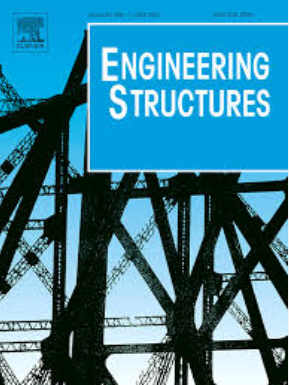Effectiveness of coated carbon fibre cementitious matrix systems for flexural strengthening of concrete beams
IF 5.6
1区 工程技术
Q1 ENGINEERING, CIVIL
引用次数: 0
Abstract
Fibre reinforced cementitious matrix (FRCM) composites are suitable solutions for structural retrofitting of various materials due to their high strength-to-weight ratio and good compatibility. The mechanical performance of FRCM depends on the properties of the textile, of the mortar and the adherence between fibre and matrix and between matrix and substrate, thus requiring proper characterization of the interfacial behaviour. In this research, 16 concrete beams reinforced with 3 different single-layer and double-layer FRCM systems were subjected to three-point bending tests. The matrices were two enhanced mortars and a conventional mortar, and the textile was a bidirectional carbon grid. At the midspan, a 70 mm notch was performed and the internal rebars were disconnected, to isolate the performance of the FRCM. Strain was monitored during the test using Digital Image Correlation (DIC). Ultimate strength for beams with the same fibre volume varied by up to 60 % depending on the mortar, with a minimum ultimate load of twice that of the control beam. The beams with two textile layers had better performance, although the fibre exploitation ratio decreases with two layers. The ultimate strength of FRCM applied in beams is superior to that obtained in tensile tests for all the compared systems.
求助全文
约1分钟内获得全文
求助全文
来源期刊

Engineering Structures
工程技术-工程:土木
CiteScore
10.20
自引率
14.50%
发文量
1385
审稿时长
67 days
期刊介绍:
Engineering Structures provides a forum for a broad blend of scientific and technical papers to reflect the evolving needs of the structural engineering and structural mechanics communities. Particularly welcome are contributions dealing with applications of structural engineering and mechanics principles in all areas of technology. The journal aspires to a broad and integrated coverage of the effects of dynamic loadings and of the modelling techniques whereby the structural response to these loadings may be computed.
The scope of Engineering Structures encompasses, but is not restricted to, the following areas: infrastructure engineering; earthquake engineering; structure-fluid-soil interaction; wind engineering; fire engineering; blast engineering; structural reliability/stability; life assessment/integrity; structural health monitoring; multi-hazard engineering; structural dynamics; optimization; expert systems; experimental modelling; performance-based design; multiscale analysis; value engineering.
Topics of interest include: tall buildings; innovative structures; environmentally responsive structures; bridges; stadiums; commercial and public buildings; transmission towers; television and telecommunication masts; foldable structures; cooling towers; plates and shells; suspension structures; protective structures; smart structures; nuclear reactors; dams; pressure vessels; pipelines; tunnels.
Engineering Structures also publishes review articles, short communications and discussions, book reviews, and a diary on international events related to any aspect of structural engineering.
 求助内容:
求助内容: 应助结果提醒方式:
应助结果提醒方式:


